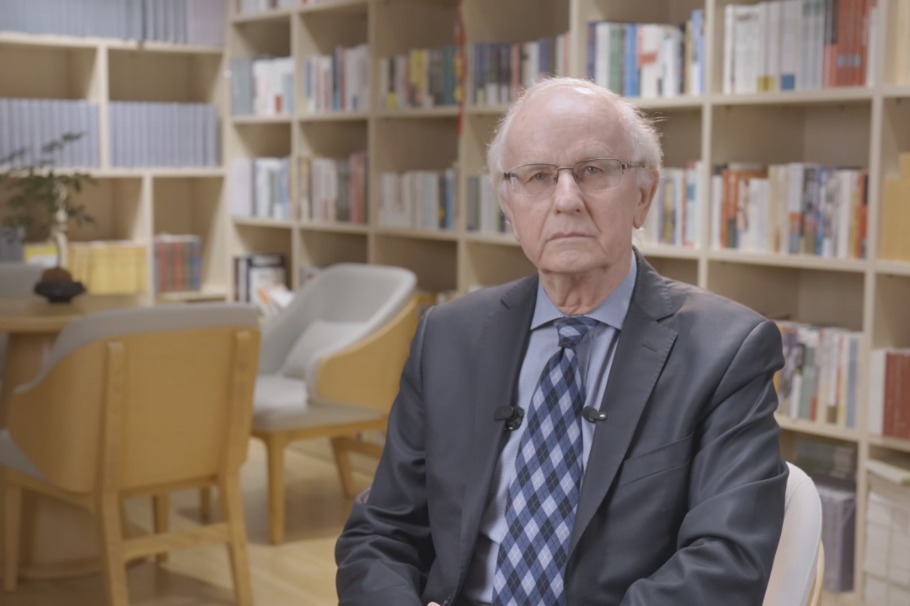Xi Focus: Breaking new ground in China's reform, development


BEIJING -- As global growth falters and geopolitical tensions roil markets, China is doubling down on reforms to drive high-quality development and provide much-needed stability to the world.
By further deepening reforms spearheaded by President Xi Jinping, China is opening up new prospects for modernization, building on decades of reform and opening-up efforts that have resulted in remarkable economic growth and global influence.
"We draw impetus from reform, leveraging reform to stimulate vitality and consolidate strength," said Xi, who is also general secretary of the Communist Party of China (CPC) Central Committee and chairman of the Central Military Commission.
One year ago, a pivotal CPC plenum laid out the reform roadmap for the following five years. Over the past year, steady progress regarding these reforms has enabled China to navigate economic headwinds with greater stability and resilience.
PROPELLING ECONOMY AGAINST HEADWINDS
Since the third plenary session of the 20th CPC Central Committee in July 2024, which unveiled more than 300 major reform initiatives, advancing reform has remained a central focus for Xi.
During key meetings and domestic inspections, he has consistently made instructions on reform-related issues, covering major principles, critical reform measures and their implementation.
Just weeks after this key plenum, the Central Commission for Deepening Overall Reform, which Xi heads, held a meeting to formulate detailed plans to push forward the reform agenda, specifying expected outcomes, timelines and division of responsibilities for the reform initiatives.
At a central Party school study session in October last year, Xi urged officials to confront challenges head-on, eradicate deep-rooted problems resolutely, address risks and difficulties with courage, and strive to "break new ground in reform and development."
During his first domestic inspection after the plenum, Xi stressed the need to "take further deepening reform comprehensively as a driving force" while chairing a seminar in Lanzhou, capital city of Northwest China's Gansu province.
One month later, in East China's Fujian province, Xi called for focusing on key areas and crucial segments, ensuring that reform of the economic system takes the lead in promoting development, while continuing to boldly experiment and independently reform.
Over the past year, he has visited more than 10 provincial regions across China — tailoring reform guidance to each region's specific circumstances, as part of the country's broader modernization drive.
In Southwest China's Guizhou province, Xi called on the province to actively integrate itself into the building of a unified national market. In Shanghai in East China, he urged accelerated efforts to develop a globally influential sci-tech innovation hub. During his visit to Central China's Henan province, Xi demanded continued efforts to strengthen the real economy.
This targeted approach has prompted China's provincial regions to leverage their competitive advantages while adapting national reform priorities to local conditions — with each region assuming distinct roles in propelling the country's overall reform agenda forward.
In the course of the past year, China has rolled out an array of well-timed, innovative policy measures to address economic challenges.
The country has innovated on the policy front to bolster domestic demand, issuing ultra-long special treasury bonds to support large-scale equipment upgrades and consumer goods trade-ins, as well as implementation of major national strategies and security capacity building in key areas.
Reform measures were also unveiled in China's quest to improve its business environment, which Xi believes directly correlates with development vitality. The Private Sector Promotion Law, the country's first fundamental law dedicated to promoting the private sector, came into effect in May 2025, while new guidelines for building a unified national market were put in place to dismantle market barriers.
Xi's visits to research institutes, science parks, manufacturing firms and industrial zones have underscored his push to integrate scientific and technological innovation with industrial development — and to translate research achievements into real productivity.
Reflecting the dividends of reform, China's economy grew by 5.3 percent year-on-year in the first half of 2025, up from a 5-percent increase in 2024. Major indicators exceeded expectations, with steady progress seen in innovation-driven development and further opening up.
FROM TOP-LEVEL DESIGN TO GRASSROOTS IMPACT
As China begins charting its next five-year development plan, policy analysts view the blueprint not only as a roadmap for economic development but also as a bold reform agenda.
In late April this year, Xi convened a meeting in Shanghai to set the tone for the 15th Five-Year Plan (2026-2030). Aligning it with the country's broader reform drive, Xi called for a steadfast expansion of high-standard opening up and faster progress in building a new development dynamic.
This reform effort rests on a long-standing foundation, which sees the Party firmly at the center. A hallmark of China's reform playbook since the late 1970s, the overall leadership of the CPC serves as the key to the success of China's reform agenda.
"No matter what we reform, or how far the reform goes, the Party's leadership must be upheld," Xi emphasized.
To reinforce this leadership role, Xi in late June chaired another meeting that reviewed new regulations governing how the Party's decision-making and coordination bodies are formed and operate. Such bodies have been instrumental in ensuring CPC leadership of reforms across a wide range of areas.
As institutional mechanisms are strengthened, some major reforms are now being codified into law, allowing proven practices to offer long-term guidance for governance.
China has long emphasized a people-centered approach to reform, framing progress not just in terms of growth or governance, but in terms of how it improves the daily lives of the Chinese people.
"Reform only matters when it serves the people and reform only advances when it relies on the people," Xi has said, positioning the Party's reform priorities as a response to people's needs.
Urbanization, household registration reform and the renewal of dilapidated urban neighborhoods have all figured prominently among his concerns.
In January 2025, just before the Chinese New Year, Xi visited a refurbished residential compound in Shenyang, capital of Northeast China's Liaoning province, which is an old industrial city, to check on the progress of a massive renovation project there.
Notably, such neighborhood overhauls are not only about improving living conditions — but also about supporting sustainable urban development. During the visit, Xi called for reform efforts to further zero in on real-world problems, highlight key areas and tackle persistent challenges.
Over the past year, China unveiled a five-year action plan to advance a people-centered new type of urbanization, listing 19 initiatives closely tied to everyday life. These include deepening reforms of the household registration system, boosting intercity commuting efficiency and renovating aging urban neighborhoods.
The government has also rolled out reforms in education, elder care and youth employment, while expanding access to affordable childcare. One of the most consequential steps came last year, when officials announced a gradual increase in the statutory retirement age — introducing voluntary and flexible measures to address the challenges posed by the country's aging population.
Observers have said that such reforms have addressed the most pressing demands of ordinary people and ensured that the fruits of development are shared more broadly and equitably.
- Hong Kong mourns victims of devastating Tai Po fire
- Memorial service held for victims of Hong Kong's residential building fire
- Experts share ideas on advancing human rights
- Private firm enters missile production
- China-Europe freight trains accelerate trade
- Aviation reform seeks to ease travel for wheelchair users





































